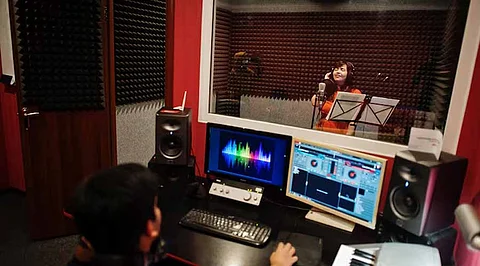

Music has long played a role in shaping physical spaces. But in recent years, curated music technology has taken a more central position in how businesses design their environments. From boutique cafés to multi-location retailers and boutique hotels, the choice of music is no longer left to chance or a personal playlist. Instead, it’s driven by platforms that merge licensing compliance, customizability, and tech integrations to create intentional, scalable soundscapes.
Most people don’t consciously notice the music playing in a store or food-setting. But they would notice if it suddenly stopped. Music has become a quiet but constant contributor to how spaces feel, guiding customer behavior and reinforcing brand identity.
Businesses now recognize that music isn’t just a finishing touch. It’s part of the overall sensory design. Just as lighting, scent, and layout affect the atmosphere, so too does the soundtrack.
Rather than relying on generic playlists or radio stations, businesses are turning to curated music platforms for business environments to create soundtracks that match the time of day, target audience, and setting. These platforms offer access to fully licensed music so businesses stay compliant with performance rights regulations while also giving operators more control over the mood and flow of their space.
The adoption of licensed music platforms isn’t limited to one sector. A growing number of industries are embracing these tools to shape customer experiences.
Cafés and creative spaces use scheduled music to align with foot traffic patterns, switching from laid-back morning tunes to more energetic lunchtime playlists. Retailers tailor in-store music to reflect seasonal trends, promotional events, or the demographics of each store location.
In spas, clinics, and wellness environments, sound is part of the therapeutic experience. The ability to curate a peaceful and consistent ambiance across multiple treatment rooms or branches is now a basic expectation.
Streaming music in restaurants also helps businesses avoid staff playing their own music, which can be inconsistent with the brand or even legally problematic. With a centralized system, everyone stays on the same page, literally and sonically.
What’s powering this shift isn’t just access to music, it’s how businesses are managing it. Platforms offer features built specifically for commercial use. These include playlist importing, station customization, and multi-location control, all from a central dashboard.
Managers can choose from a wide variety of professionally curated stations or build their own playlists that reflect their brand’s personality. Once created, these playlists can be scheduled to play at specific times throughout the day or week, creating a predictable and professional soundscape without day-to-day oversight.
They integrate directly with systems like Sonos and Crestron, making it easy to implement even in large or complex audio environments. This compatibility means businesses can use existing hardware while upgrading the software layer of their music experience.
For businesses with more than one location, consistency is key. But that doesn’t mean every location needs to sound the same. A café in a city center might benefit from a more upbeat midday playlist, while a location in a quieter neighborhood may prefer a slower tempo.
Curated music tech allows operators to assign different schedules, stations, or playlists to each location, all while managing everything from a single account. This level of control supports brand alignment while still allowing for local adaptation.
Managers can also assign user permissions, so staff can manage day-to-day playback without the ability to alter station selections. This prevents unintended changes while still offering enough flexibility to keep things running smoothly.
More than ever, businesses are expected to create spaces that feel intentional. Sound plays a role in whether a space feels vibrant, calm, luxurious, or playful. When used thoughtfully, music can help customers feel welcome, keep them engaged for longer, and reinforce the business’s values.
Platforms don’t just make this possible, they make it practical. With ad-free streaming, customizable branding options, and clear licensing coverage, businesses can focus on the customer experience rather than the logistics of music management.
The role of music in commercial spaces is evolving. What was once seen as an afterthought is now part of a larger conversation around ambiance, customer experience, and brand design. Thanks to curated music platforms built for business environments, more companies are finding ways to take control of their soundscapes, whether they operate a single café or dozens of retail locations. The result isn’t just a better playlist. It’s a better environment for everyone who walks through the door.
